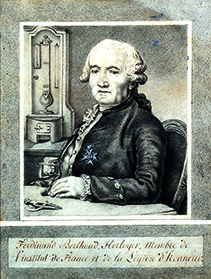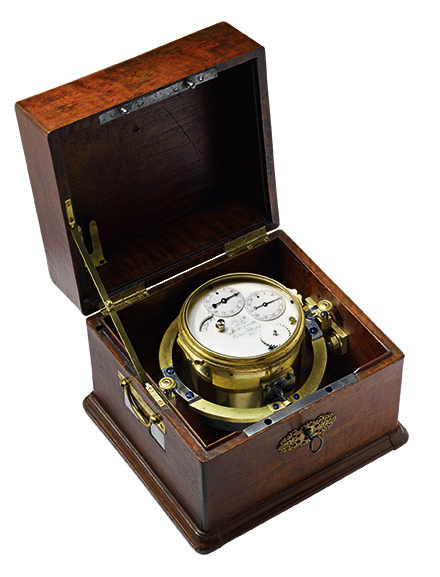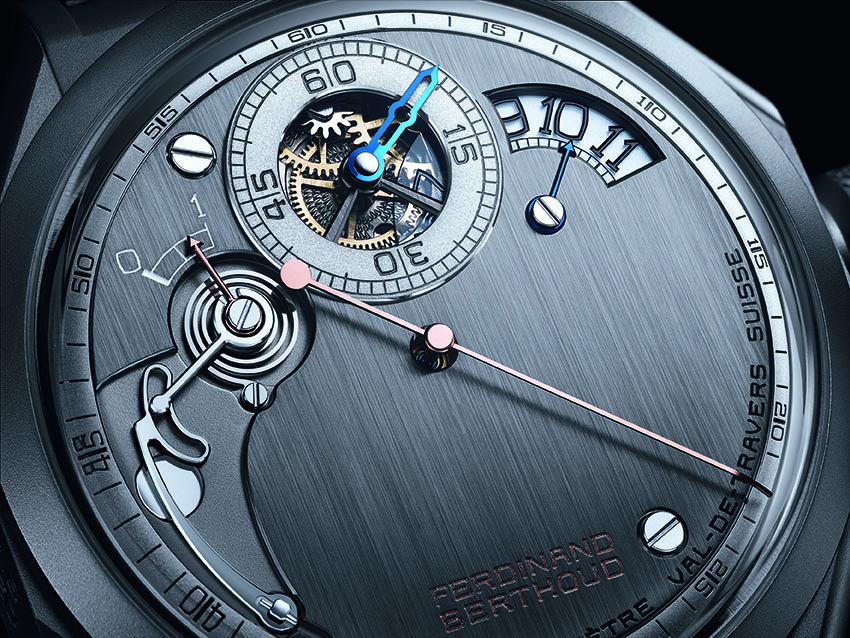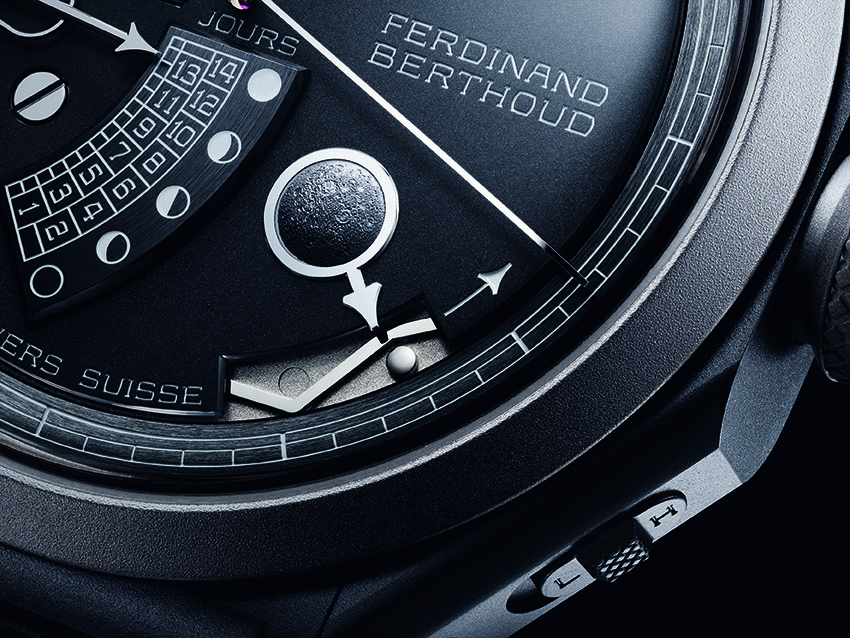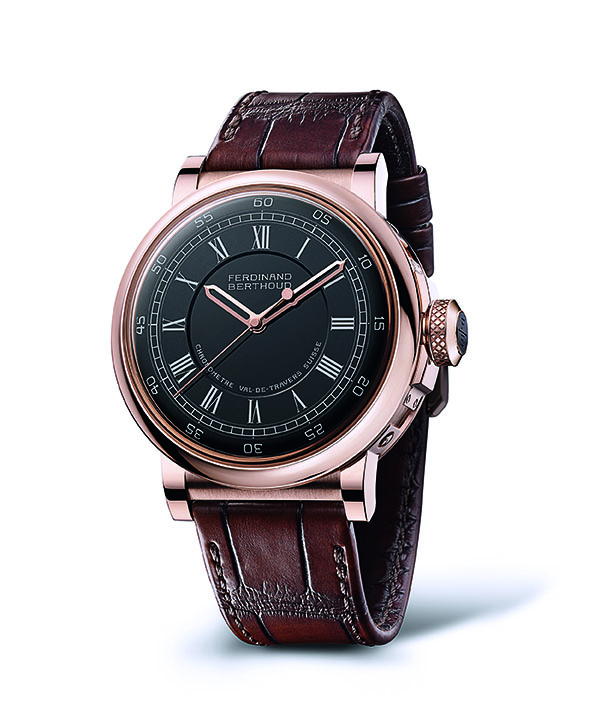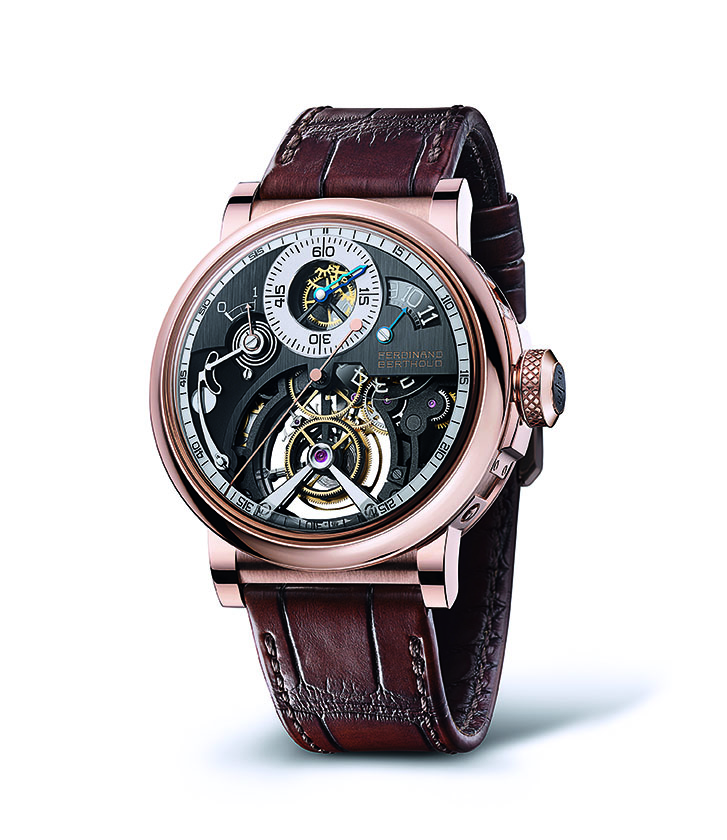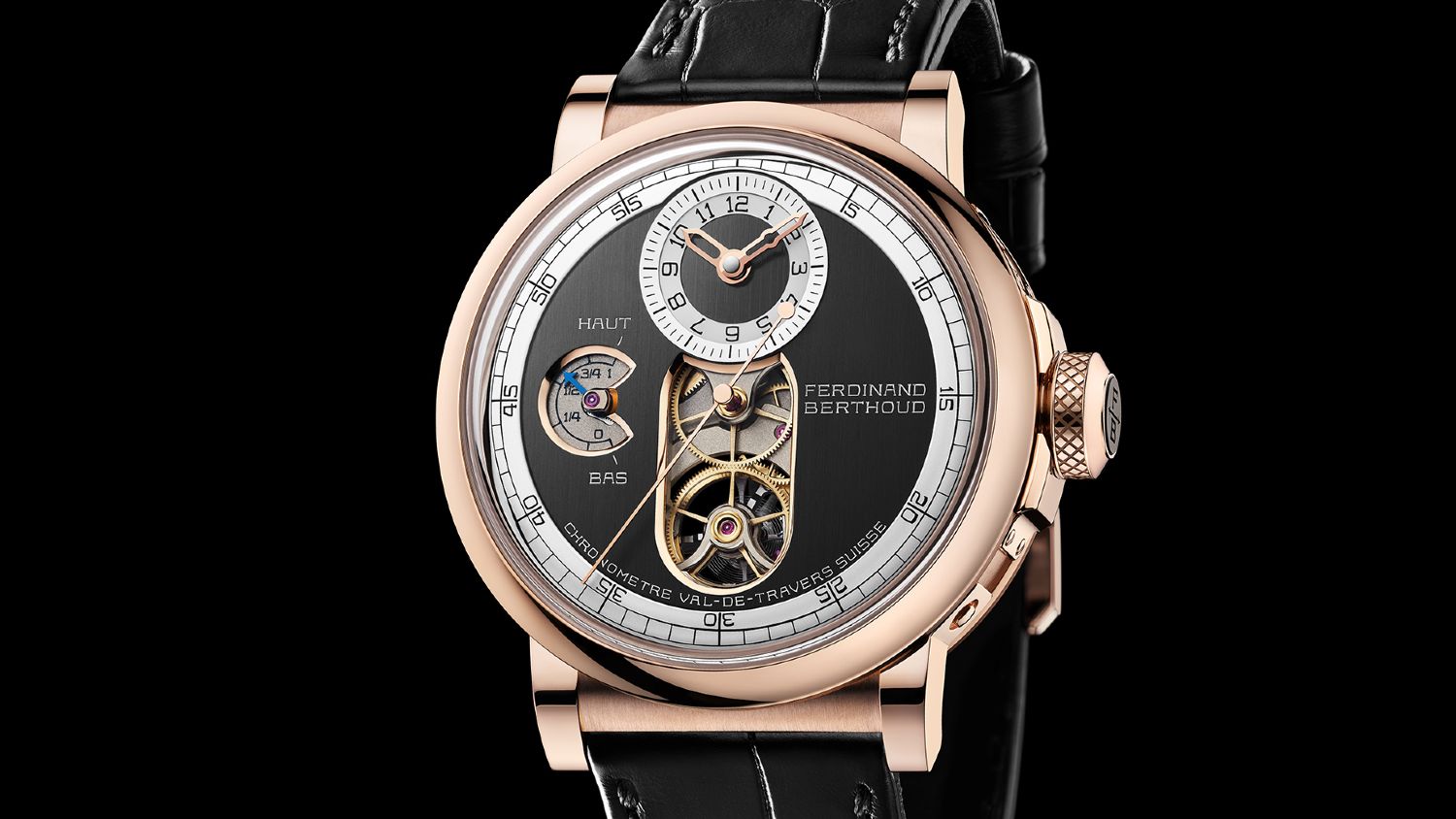One of the most intriguing young high-horology watch brands takes its name and inspiration from the most important historical watchmaker you’ve probably never heard of.
Ferdinand Berthoud (1727-1807) was born in Val-de-Travers in the principality of Neuchâtel, then part of the kingdom of Prussia. He came of age in a family that boasted several talented watch- and clockmakers, including two of his brothers, Jean-Henry and Pierre. Ferdinand became Jean-Henry’s clockmaking apprentice in 1741, while at the same time undergoing a thorough education in the sciences. In 1745, several years after receiving his apprenticeship certificate, Ferdinand moved to Paris and plied his horological trade as a journeyman. By 1753, he grew skilled enough to earn the title of Master Clockmaker, at the relatively tender age of 26, by order of the French Royal Council.
By 1770, Berthoud had acquired an even more prestigious designation: “Clockmaker- Mechanic to the King and to the Navy”. This had been the culmination of several years’ work in the fledgling field of marine clocks and chronometers, which brought him into contact, and in some cases conflict, with contemporaries such as John Harrison and Thomas Mudge, and a rivalry with another luminary, Pierre Le Roy, inventor of the detent escapement. He would achieve great renown for his ingenious inventions, as well as for his numerous writings on horology and science, named a Knight of the Legion of Honor by Napoleon Bonaparte in 1804, and revered in France as the father of marine chronometry. Like so many early watchmaking pioneers, the mark he left on timekeeping history would largely fade into memory after his death at age 80.
The return of Berthoud’s name and legacy began, fittingly enough, in the town of Fleurier, in the modern district of Val-de-Travers, headquarters to the Chopard Manufacture and its private museum of vintage timepieces, the L.U.Ceum. Chopard CEO Karl-Friedrich Scheufele, an avid collector and the primary curator of the L.U.Ceum, first became aware of Berthoud and his work while researching vintage timepieces to add to the collection.
“He was born just down the road from Fleurier,” Scheufele revealed, “and then I discovered that he was a writer of books and a teacher of watchmaking along with being one of the great watchmakers of all time, especially in the area of ship’s chronometers.”
Scheufele dutifully tracked down and acquired the rights to the Ferdinand Berthoud brand name in 2006, with an eye toward developing new, contemporary timepieces that would reinterpret Berthoud’s inventions for a 21st-century audience of connoisseurs. At first, he admits, “I didn’t know what to do with the name at the time. I knew that if we [the Chopard Group] ever dared to make a model with the Berthoud name, it would have to be something special.”
As per that mandate, Scheufele, who runs the Chopard watch-and-jewellery maison with his sister and co-president, Caroline, pointedly refused to entertain the idea of integrating the Berthoud legacy into the existing brand DNA of Chopard, or even its most upper-echelon horological collection, L.U.C, named for founder Louis-Ulysse Chopard. “I’m a purist,” he says. “From the very beginning, I said to my team, ‘Forget what you’re doing at Chopard, forget what you’re doing at L.U.C, don’t even think about using components from Chopard movements, don’t think about synergies. This is another world.’ Not everyone understood at the time. I suppose it seemed somewhat irrational. Nowadays everyone is looking to streamline operations and here I was, asking exactly the contrary!”
Ferdinand Berthoud, the brand, officially joined the Chopard Group in 2015 and made a critical splash right out of the gate. The debut piece, called the Chronomètre FB 1, established many of the aesthetic and technical codes that its successors would adopt while also setting the bar high for those successors. The hand-wound movement at its heart is designed and built at the dedicated atelier that Scheufele established within the Chopard Manufacture, but separate from the facilities where the brand’s L.U.C timepieces are manufactured.
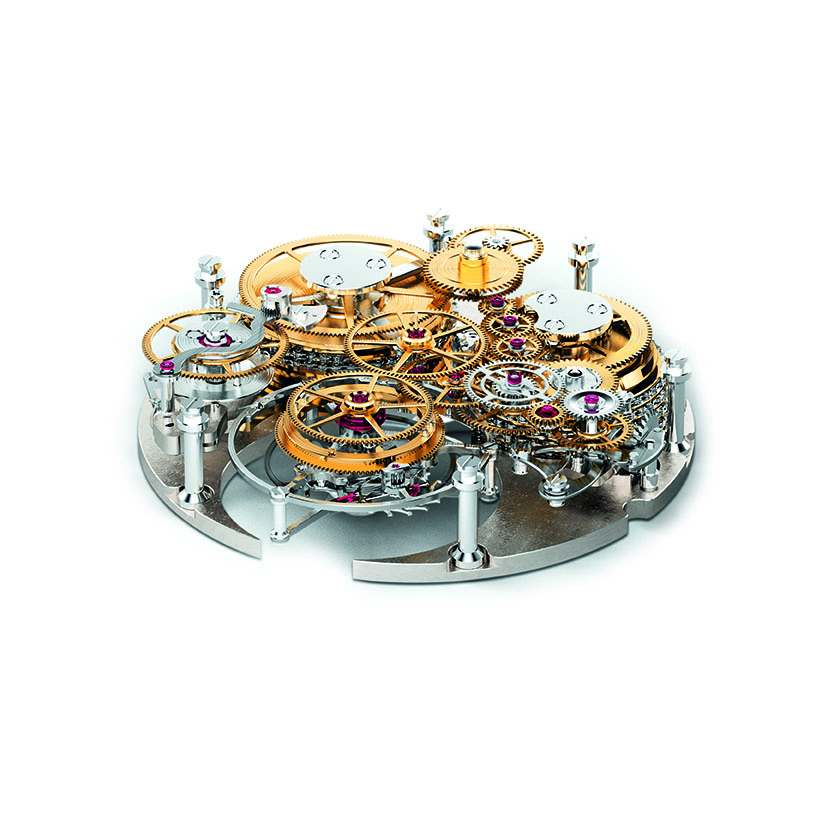
Dubbed Calibre FB-T.FC, the movement is manually wound and built in the pillar-style architecture of classical marine chronometers from Berthoud’s heyday, featuring a large tourbillon escapement that oscillates at a frequency of 3 Hz (21,000 vph) and a constant-force regulating device that uses a suspended fusee-and-chain transmission, a torque-optimising device that is rarely found in a wristwatch. The movement amasses its 53-hour power reserve through a differential-based winding system and displays this power reserve via a patented system that uses a “suspended mobile cone” moving up and down an arbor connected to the barrel. Mounted on the cone is a mobile, jewel-tipped spindle that reflects the barrel’s state of wind, and transmits it to the dial-side power reserve hand by a system of flat levers and a spiral spring. In total, Calibre FB-T.FC comprises an astounding 1,120 parts, including the 285 minuscule components that make up the chain of the fusee-and-chain mechanism. Notably, the calibre, like all Ferdinand Berthoud calibres that would follow it, boasted a chronometer certification from the Swiss testing agency COSC.

Ferdinand Berthoud watchmakers installed this ambitious movement inside a 44mm, white gold case with titanium lugs and an unconventional octagonal shape that Scheufele says was chosen to resemble a “ship’s chronometer on the wrist.” Marine clocks were often housed in square or octagonal boxes with gimbals to keep them level on the swaying seas and side-mounted glass apertures that allowed a view into the movement to see at a glance if their mechanisms were functioning; these waterproof ‘portholes’ became a signature element of the FB 1 case. The watch’s dial was made of ruthenium, with a vertical satin-brushed finish, an off-centre subdial at 12 o’clock for the time; a blue PVD-coated central seconds hand made of bronze; an oval-shaped cutout providing a glimpse of the tourbillon; and an unconventional indicator for the 53-hour power reserve.
The Chronomètre FB 1 had barely made its way onto the radar of the watch enthusiast community when it found itself in the international spotlight, winning the Aiguille d’Or, the top prize at the 2016 Grand Prix d’Horlogerie Genève, the prestigious ‘Oscars of Watchmaking’. “I still get emotional about that,” says Scheufele. “It was such a competitive situation, with so many top-notch watches, and probably 99 per cent of the population, even those who know about watchmaking, had never heard of Ferdinand Berthoud. I hoped we might win a prize in our category but was blown away to take the top prize. At the same time, I left with a lot of expectations weighing on my back. It’s one thing to be recognised for doing something exceptional, but then you have a responsibility to continue to improve.”
The award-winning model has subsequently been made available in an array of case materials and combinations, all limited editions. As Scheufele emphasises, all Ferdinand Berthoud timepieces are limited by design: The manufacture produces a set number of movements and places them into a curated selection of cases.
The much anticipated encore to the FB 1 series and its FB-T.FC calibre followed: The Calibre FB-T.FC-2 incorporated all of the micromechanical marvels of its predecessor but with a contemporary twist: Its bridges and fusee-and-chain device were made of sapphire to allow an even more unimpeded view into its inner workings. The sapphire bridges are finely chamfered on their edges and satin-brushed on their bevels; they join other subtle aesthetic enhancements like the blued finish on the steel arrow supporting the tourbillon carriage to add contrast with the rhodium-plated baseplate. Also blued, and visible on the dial side, are the adjustment blocks on the spring and balance assembly, the tourbillon carriage’s wheel and the fourth, or seconds wheel. Ferdinand Berthoud installed this chronometer-certified mechanism inside another set of octagonal cases, in full titanium or platinum with gray ceramic, with galvanized black or silver dials.
A specific 18th-century clock, Berthoud’s Marine Chronometer No. 7, provided the template for the FB 1R collection, which debuted in 2018 and introduced a new regulator-style dial display. Arranged unconventionally on a manually satin-brushed dial, the hours appear on a disk-type display at 2 o’clock, the minutes, on a cutout subdial at 12 o’clock, the seconds on a thin central hand in gilded bronze. The regulator timekeeping elements are joined on the dial by the distinctive mobile-cone power-reserve display. Offered in either carburised stainless steel or patinated bronze cases, the FB 1R models contain the COSC-certified hand-wound Calibre FB-T.FC.R. The carburised steel model, which took home another GPHG award, the Chronometry Watch Prize, in 2019, was limited to 20 pieces; the patinated bronze version was limited to
five pieces.
Having conquered the challenge of a regulator, Ferdinand Berthoud next shot for the moon. Its next in-house movement, Calibre FB-T.FC.L, added a patented, age-of-the-moon complication to its impressive array of features, including a constant-force tourbillon with fusee-and-chain mechanism. Under a 12 o’clock hours-and-minutes subdial, the current moon-phase and its waxing or waning status is displayed on a half-sphere with an arrow that shows both the visible and hidden face of the lunar object, while the age of the moon in days can be read off a sector marked from 1 to 14, swept over by a hand. On this movement, these astronomical functions have pushed the power reserve to the rear side. The Chronometre FB1L models that house the movement are a pair of 10-piece limited editions, one in 18K gold with black ceramic, the other in anthracite ceramised titanium.
For the next addition to the collection, Ferdinand Berthoud dialed back the marine chronometer aesthetics in favour of a more classical dial layout and a traditional round case, all without compromising on the technical mastery that has defined its manufacture calibres. The new Calibre FB-RE.FC featured a natural deadbeat second in addition to the fusee-and-chain constant-force device, with a one-second remontoire visible on the movement’s back. These mechanisms work together for a complex and reliable system of regulating the torque reaching the gear train. The embellishment of the hand-wound movement is also exceptional, with a frosted finish on the nickel silver bridges achieved through fine manual graining with a brush. The split-level dial, in white or black grand feu enamel, is classically designed, with only the hours, minutes, and seconds on display, via blued hands on Roman numerals. Ferdinand Berthoud’s first round case, measuring 44mm like its octagonal sibling, debuted on the model, dubbed Chronomètrie FB 2RE, in both 18K white gold or rose gold, and featuring the same watertight porthole apertures for a side view of the movement.
For 2021, Ferdinand Berthoud produced one of its most exclusive calibres yet and also ushers in a new era for its business model, offering the FB-T.FC-RS movement in both the maison’s original octagonal case (FB 1) and its more recently launched round one (FB 2), and communicating, for the first time, the exact number of calibres that will be produced. The Régulateur Squelette FB RS, unveiled at the 2021 Watches and Wonders exhibition in April, is the first skeletonised timepiece from Ferdinand Berthoud. Accordingly, its designers have focused on dial-side visual panache in its architecture. Black PVD-coated surfaces contrast with the polished, matte, satin-brushed and sandblasted finishes on other components. The tourbillon bridge alone draws the eye with its combination of mirror-polished and chamfered surfaces, polished flanks, and sandblasted underside.
The Marine Clock No. 8, a historical timekeeper produced by the eponymous master horologist in 1768 in Paris, provides inspiration for the wristwatch, which again boasts a fusee-and-chain transmission to deliver constant force to the tourbillon and its direct-drive seconds. The hours are displayed on a large sapphire disk behind an aperture at 2 o’clock, the minutes on a single-handed subdial at 12 o’clock, the seconds by a long, thin central hand on a flat sapphire bezel ring.
The two case variations could scarcely be more different. The octagonal FB 1 RS.6 case is made of carburised stainless steel, an extraordinarily hard (1,200 Vickers), scratch-resistant and corrosion-resistant metal, while the FB 2RS.2 case is made, as per Chopard corporate mandate, with “ethically sourced” 18K rose gold. Only 20 pieces of Calibre FB-T.FC-RS, which boasts four patents, will be made, distributed between the two case options. The choice of either the FB 1 or FB 2 case, along with personalisation of each watch, will be the watchword for Ferdinand Berthoud going forward.
Moreover, despite the brand’s awards and accolades garnered within its first five-plus years, plus the fact that it has the resources of the Chopard Manufacture at its disposal as a supplier, expansion for Ferdinand Berthoud will be slow and incremental. Only three watchmakers are dedicated to assembling Ferdinand Berthoud timepieces, and the manufacture currently rolls out only about 25 to 30 of them per year. “If we want to keep up the exceptional quality of the finishing, of the components, of the craftsmanship,” Scheufele says, “I can’t really envision growing a lot.”
Images: Courtesy Brand
